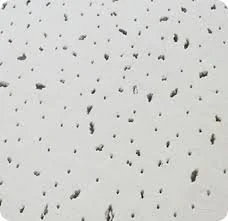Dec . 13, 2024 06:31 Back to list
Choosing the Right Fiber for Your Ceiling Design and Performance Needs
The Importance of Fiber in Ceiling Materials
In modern construction, the need for materials that combine functionality, aesthetics, and sustainability is more crucial than ever. Among these materials, fiber-reinforced products are becoming increasingly popular, particularly in ceiling designs. Fiber materials offer a plethora of benefits, enhancing both the performance and visual appeal of ceilings in residential and commercial spaces. This article delves into the importance of fiber in ceiling applications, exploring its advantages, types, and impacts on building design.
Understanding Fiber-Reinforced Ceilings
Fiber reinforcement involves the integration of fibrous materials into a substrate to enhance its structural integrity and performance. In ceiling applications, fibers such as glass, mineral, or natural fibers like cellulose are utilized. These materials are incorporated into panel systems, tiles, or even plaster to improve durability, reduce weight, and enhance acoustical properties.
Advantages of Fiber in Ceiling Materials
1. Enhanced Durability One of the primary benefits of fiber-reinforced ceilings is their increased durability. Fiber materials can significantly enhance the resistance of ceiling panels to physical impacts and environmental factors. This results in longer-lasting ceilings that require less frequent replacement or repair.
2. Acoustic Performance Sound control is a significant consideration in any building, be it an office, a school, or a residential home. Fiber-reinforced ceilings excel in this regard. The fibrous structure allows for the absorption of sound waves, contributing to better acoustics within a space. This can lead to improved productivity in workplaces and a more serene environment at home.
3. Lightweight Options Fiber-reinforced ceiling materials are often lighter than traditional alternatives. This can lead to lower shipping costs and easier installation processes. A lightweight ceiling system can also reduce the load on structural elements, which is particularly beneficial in renovations or when retrofitting older buildings.
fibre for ceiling

4. Sustainability With the growing emphasis on sustainable construction practices, fiber materials present an attractive option. Many fibers used in ceiling designs are derived from renewable sources or are recyclable. Using these materials can contribute to LEED certification points and a more eco-friendly building profile.
5. Aesthetic Versatility Fiber-reinforced ceilings are available in a variety of styles and finishes, allowing for creative design elements that can enhance the overall aesthetics of a space. Whether aimed at a modern, minimalist look or a more traditional feel, these ceilings can be tailored to fit various architectural styles.
Common Types of Fiber Used in Ceilings
1. Glass Fibers Typically used for their strength and resilience, glass fibers are ideal for commercial spaces needing durable ceilings that can withstand high traffic and wear.
2. Mineral Wool This material is widely recognized for its excellent fire-resistant properties, making it a preferred choice in spaces where safety is a concern. Plus, its sound-absorbing capabilities make it a staple in auditoriums and conference rooms.
3. Cellulose Fibers Often sourced from recycled paper, cellulose fibers are an eco-friendly choice that provides decent sound absorption and insulation properties. This makes them suitable for residential applications, especially in environmentally conscious building projects.
Conclusion
As modern construction continues to evolve, the incorporation of fiber into ceiling materials stands out as a significant advancement. Offering durability, acoustic performance, sustainability, and aesthetic versatility, fiber-reinforced ceilings are not just a trend; they represent the future of building design. As architects and builders seek innovative solutions, the role of fiber in enhancing the functionality and appearance of ceilings will undoubtedly become more pronounced, shaping the landscapes of our homes and workplaces for decades to come.
-
Durable Ceiling T Grid Systems | Easy InstallationNewsAug.29,2025
-
PVC Gypsum Ceiling: Durable, Laminated Tiles for Modern SpacesNewsAug.28,2025
-
Pvc Gypsum Ceiling Is DurableNewsAug.21,2025
-
Mineral Fiber Board Is DurableNewsAug.21,2025
-
Ceiling Tile Clip Reusable DesignNewsAug.21,2025
-
Ceiling T Grid Modular DesignNewsAug.21,2025







